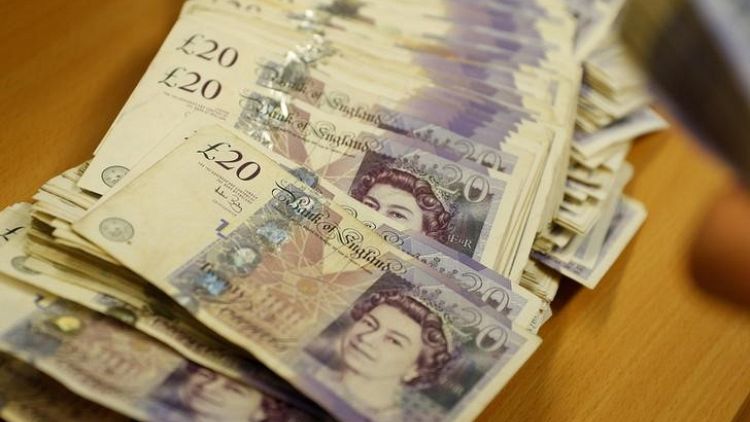By Saikat Chatterjee
LONDON (Reuters) - Sterling dived below $1.30 for the first time in 10 months on Thursday, sent lower by weak economic data, a resurgent dollar and uncertainty about how Britain's approaching exit from the European Union will play out.
Lacklustre retail sales data for June painted a picture of an economy struggling against the backdrop of stagnating wage growth, steady inflation figures and difficult Brexit negotiations.
That is casting a shadow on expectations of an interest rate rise by the Bank of England at its Aug. 2 meeting.
The weak data comes at a time when the dollar has rallied seven percent against a basket of developed G10 nations' currencies in the last three months. Escalating trade tensions, robust U.S. economic growth and a confident Federal Reserve have all boosted the greenback's appeal.
"With fundamentals weak and a big question mark on Brexit, we think sterling can fall into the low $1.20s," said Neil Mellor, senior currency strategist at BNY Mellon in London.
Britain's June retail sales declined 0.5 percent, defying expectations of a 0.2 percent increase on a monthly basis.
On a quarterly basis British retail sales rose the most in over a decade, up 2.1 percent on the first three months of 2018, but investors focused on the June decline.
That saw sterling extending recent falls, touching an early-September 2017 low of $1.2958 and down 0.7 percent on the day. The exporter-heavy FTSE 100 <.FTSE> rallied.
Many reckon the retail sales numbers should give the BoE some confidence about raising rates next month -- bets on a hike remain fairly entrenched, with expectations for a 25 basis point around 70 percent, down from nearly 80 percent earlier this week.
"The data is not that great but we still expect the Bank of England to raise rates in August in the backdrop of a tight labour market and may signal an extended pause after that," Credit Agricole strategist Manuel Oliveri said.
The weakening economy, messy politics and the ebbing of rate hike bets beyond August have crushed bullish sterling positions, with short bets against the currency the biggest since September 2017.
That marks a reversal from April when long sterling bets peaked at more than three-year highs and the pound traded 10 percent higher, around $1.43.
BREXIT AND BEARS
Most of sterling's losses have come in recent weeks as Brexit uncertainty has grown.
After narrowly escaping defeat in parliament this week over her plans for leaving the EU, Prime Minister Theresa May has signalled she will not drop a proposal on Britain's future relationship with the bloc.
Fears linger that the country may crash out of the EU without a trade deal in place.
"Around $1.30, sterling is nowhere near to being fully priced for a worst-case political scenario, but participation in the pound is unlikely to climb much until that worst-case scenario looks a lot more certain," said Stephen Gallo, European head of FX strategy at BMO Financial Group.
However, the British currency's performance looks better when measured against non-dollar currencies, suggesting much of its weakness is down to the broad-based dollar surge.
Against the euro for instance <EURGBP=D3>, sterling is only at a four-month low of 89.415 pence.
On a year-to-date basis, sterling is a middle-of-the-pack performer against the dollar; the Swedish crown <SEK=D3> and the Canadian dollar <CAD=D3> lead the losers, according to Thomson Reuters data.
And against a trade-weighted basket of its peers <GBPTWI=BOEL> sterling is at a late-November 2017 low.
However, currency derivative markets are flashing warning lights.
Three- and one-month risk reversals <GBP1MRR=> <GBP3MRR=>, a ratio of calls to put options, are trading at their lowest since June 2017, indicating that traders are betting on more weakness.
(Additional reporting by Tommy Wilkes, Helen Reid and Andy Bruce; Editing by Catherine Evans and Richard Balmforth)



